The Architecture of Paul Rudolph: a new tome charts the rise and fall of one of America’s most divisive architects
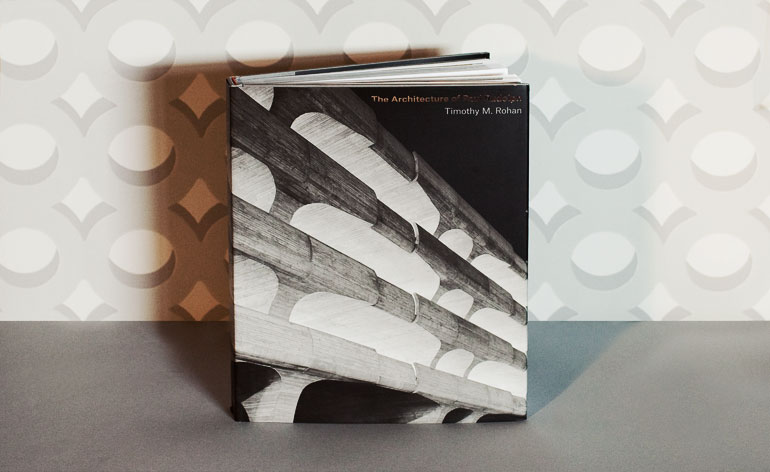
It seems astonishing that no one has written a comprehensive monograph on Paul Rudolph before, given his significance in the history of American post-war architecture. His monumental bush-hammered concrete Art and Architecture Building at Yale University is one of the most iconic Brutalist structures of the 1960s. Timothy Rohan tells the story of this controversial monolith (a precursor of the Barbican), which was notoriously torched in 1969, possibly by disgruntled students, but restored in 2009.
Rudolph's career was overshadowed by this catastrophe, which marked his transformation from prophet to pariah. Once regarded as the saviour of American architecture, latterly he was shunned on his home turf and practiced mainly in southeast Asia. A salutary tale of a gifted architect falling spectacularly out of fashion, Rohan's perceptive account of Rudolph's rise and fall provides a fascinating read.
The buildings Rudolph - a complex individual - created, both pre- and post-Yale, were imaginative and refined. Initially based in Florida, he designed a string of innovative houses during the late 1940s and early 1950s that were both technically and aesthetically inventive. One had a concave sprayed plastic roof; another had an undulating plywood canopy.
Walker Guest House (1952-3), my personal favourite, was a glass box with white spider legs and red cannonball weights counterbalancing its cantilevered shutters. Although Rudolph later scaled up after turning his attention to public buildings, the expressive approach that he developed early on continued to prevail. His sculptural Temple Street Garage (1963) in New Haven - poetry in poured concrete - must surely be the most beautiful car park in the world.

Rudolph was well-known for designing several private houses in the 1970s. Bass House (pictured) is located in Fort Worth, Texas and is one of the most celebrated of his domestic oeuvre
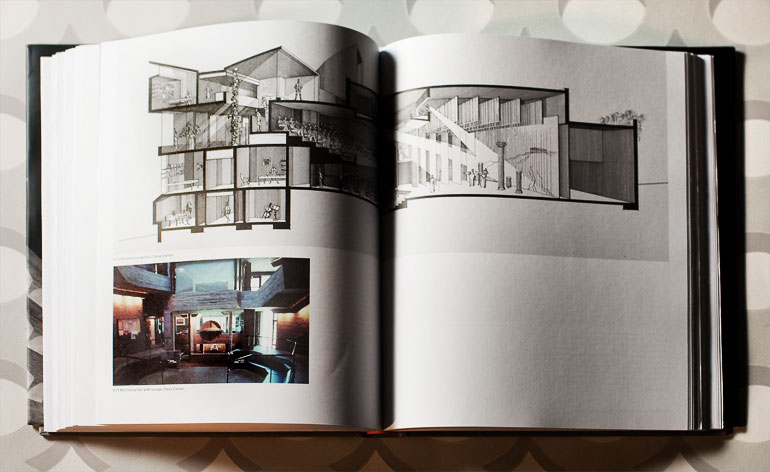
A spread from the book depicts the perspective section of the Dana Creative Arts Center at Colgate University
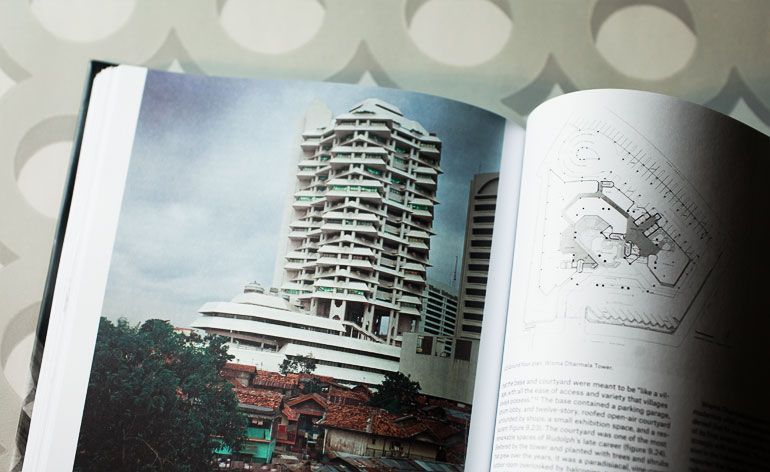
After the catastrophic torching of the Art and Architecture building (A & A Building) at Yale University, Rudolph worked increasingly in Southeast Asia. The Wisma Dharmala Tower, pictured here, is in Jakarta
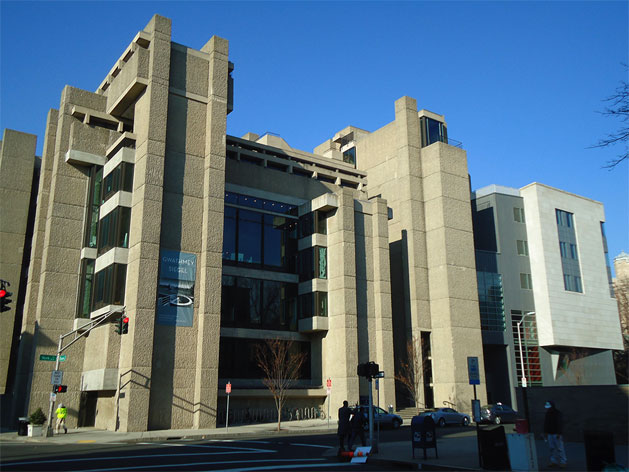
Rudolph Hall - formerly the Yale A & A Building - was restored and expanded with new wing by Charles Gwathmey in 2009.
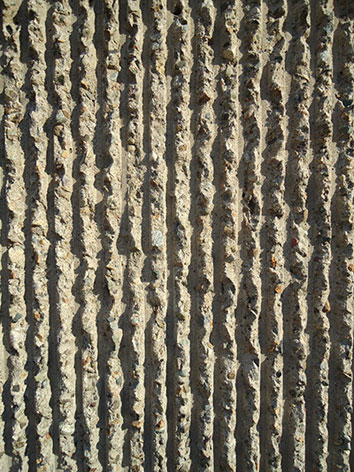
The famed corrugated cement on the A & A Bulding at Yale. Rudolph used corrugated concrete to investigate light, shadow and texture.
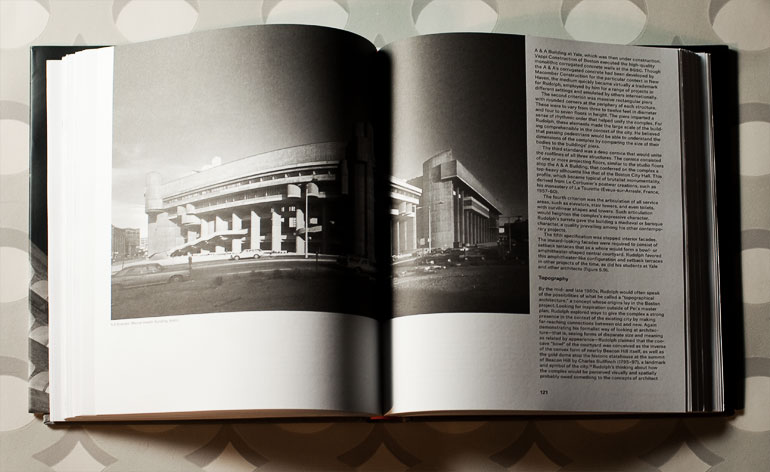
In the 1960s, during a period of sensational success, Rudolph's name was synonymous with architecture in America. The Mental Health Building at the Boston Government Service Center (pictured) was designed during this period

Ever confident Rudolph firmly believed that he was the master of interiors. This spread shows auditorium, library and stairway of the A & A Building at Yale

Rudolph at his Sanderling Beach Club, Florida,1952‐53. Courtesy of Library of Congress, Prints and Photographs Division
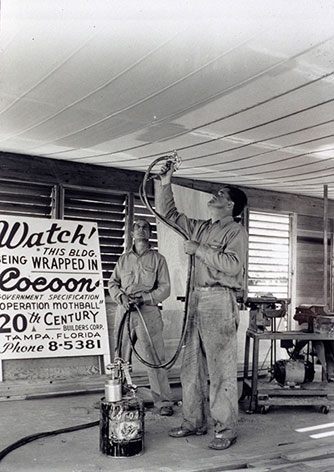
Spraying 'Cocoon' at Rudolph and Ralph Twitchell's Healy 'Cocoon' House in Siesta Key, Florida, 1948-50. The roof was a chance for Rudolph to experiment with plastic.
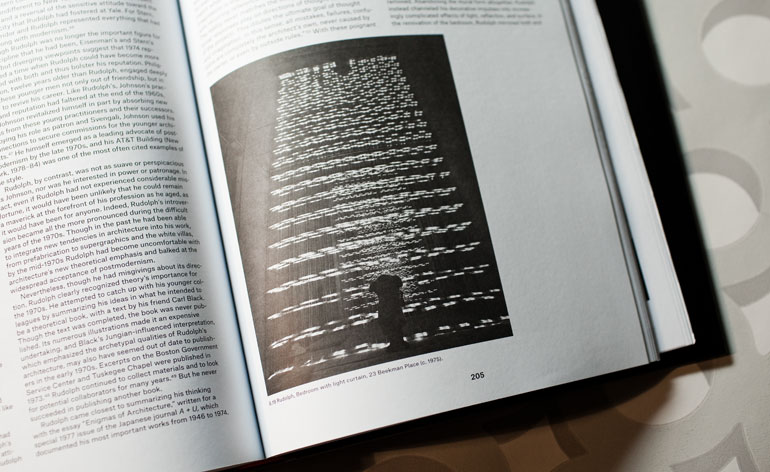
Pictured here is the bedroom curtain at 23 Beekman Place, New York, Paul Rudolph's apartment
Receive our daily digest of inspiration, escapism and design stories from around the world direct to your inbox.
-
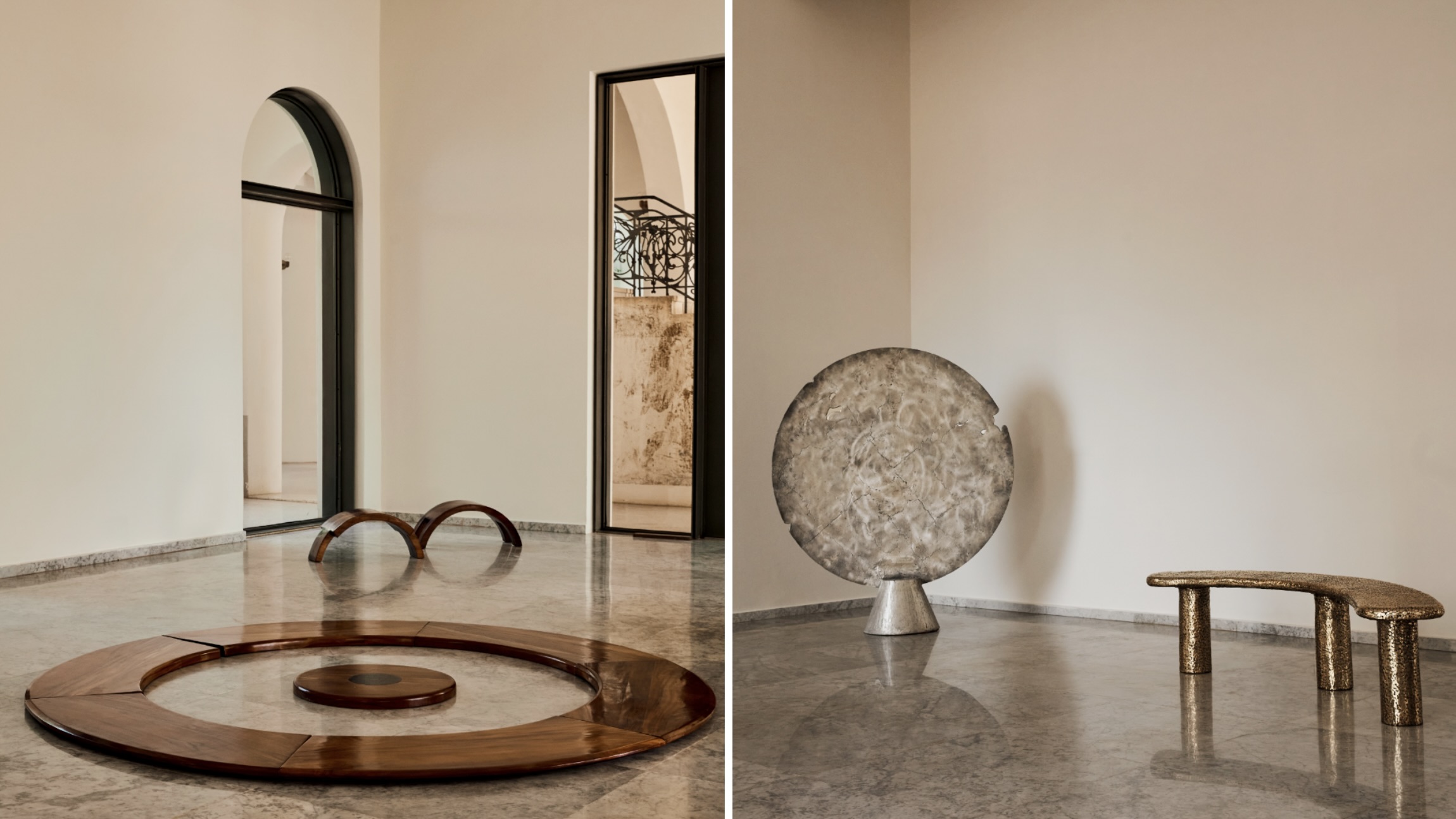 Togo's Palais de Lomé stages a sweeping new survey of West African design
Togo's Palais de Lomé stages a sweeping new survey of West African design'Design in West Africa' in Lomé, Togo (on view until 15 March 2026), brings together contemporary designers and artisans whose work bridges tradition and experimentation
-
 Vigilante’s 1979 Jeep Wagoneer features luxury trim, modern muscle and elevated styling
Vigilante’s 1979 Jeep Wagoneer features luxury trim, modern muscle and elevated stylingTexan restomod master Vigilante has created a new take on the classic Jeep Wagoneer, transforming the 1970s family SUV into a sleek, architectural powerhouse
-
 Australian studio Cordon Salon takes an anthropological approach to design
Australian studio Cordon Salon takes an anthropological approach to designWallpaper* Future Icons: hailing from Australia, Cordon Salon is a studio that doesn't fit in a tight definition, working across genres, techniques and materials while exploring the possible futures of craft
-
 Step inside this resilient, river-facing cabin for a life with ‘less stuff’
Step inside this resilient, river-facing cabin for a life with ‘less stuff’A tough little cabin designed by architects Wittman Estes, with a big view of the Pacific Northwest's Wenatchee River, is the perfect cosy retreat
-
 Remembering Robert A.M. Stern, an architect who discovered possibility in the past
Remembering Robert A.M. Stern, an architect who discovered possibility in the pastIt's easy to dismiss the late architect as a traditionalist. But Stern was, in fact, a design rebel whose buildings were as distinctly grand and buttoned-up as his chalk-striped suits
-
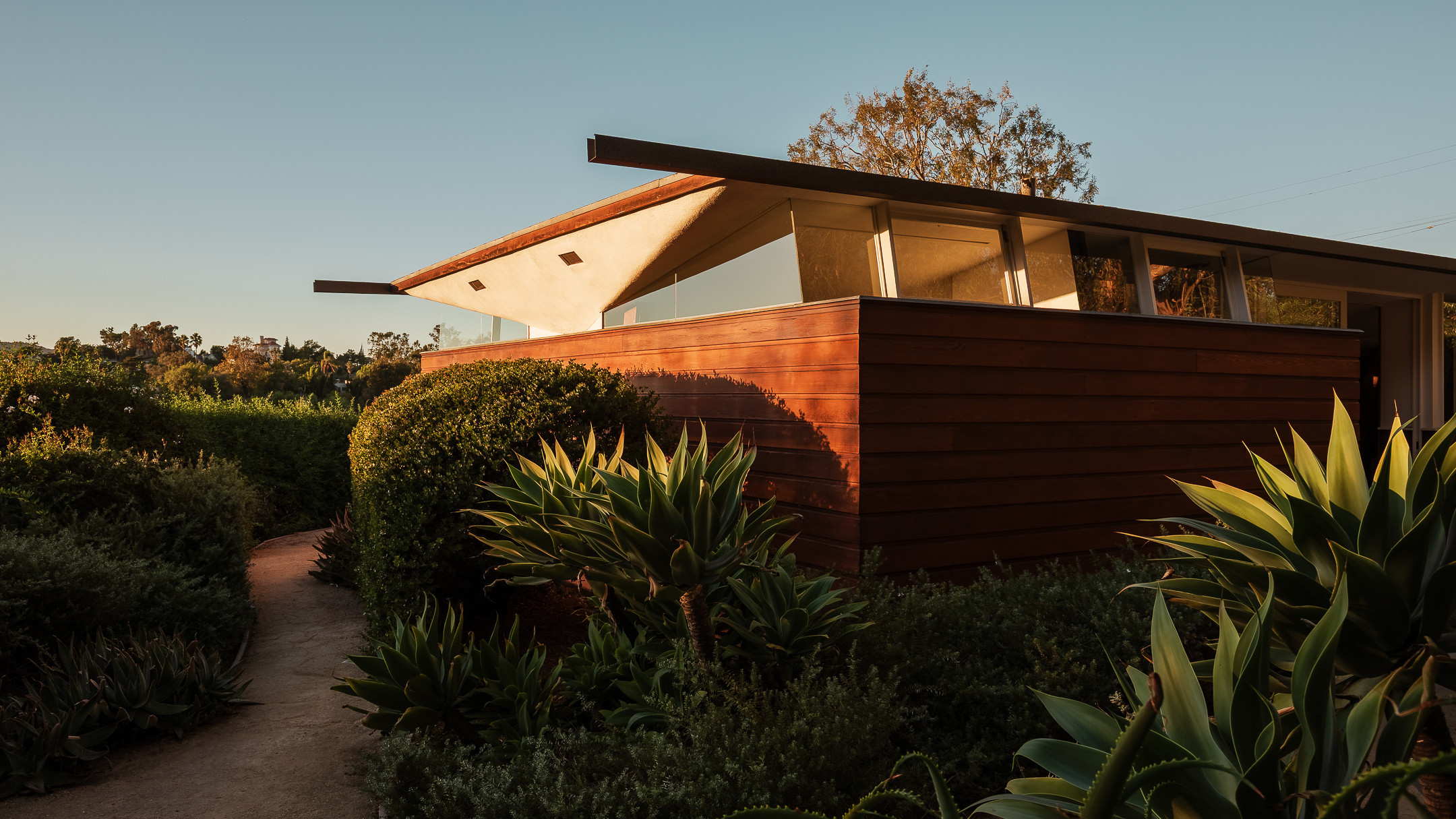 Own an early John Lautner, perched in LA’s Echo Park hills
Own an early John Lautner, perched in LA’s Echo Park hillsThe restored and updated Jules Salkin Residence by John Lautner is a unique piece of Californian design heritage, an early private house by the Frank Lloyd Wright acolyte that points to his future iconic status
-
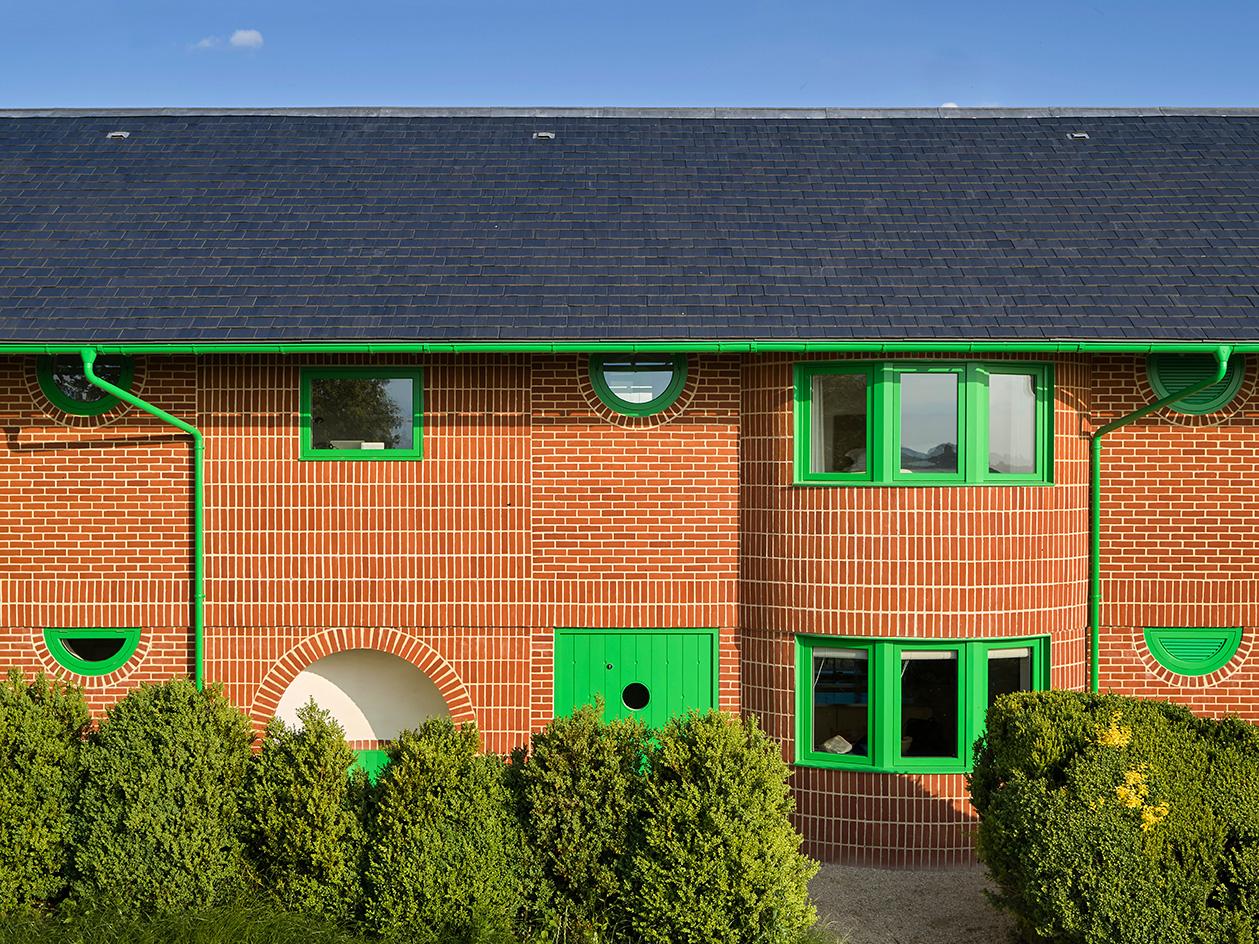 David Kohn’s first book, ‘Stages’, is unpredictable, experimental and informative
David Kohn’s first book, ‘Stages’, is unpredictable, experimental and informativeThe first book on David Kohn Architects focuses on the work of the award-winning London-based practice; ‘Stages’ is an innovative monograph in 12 parts
-
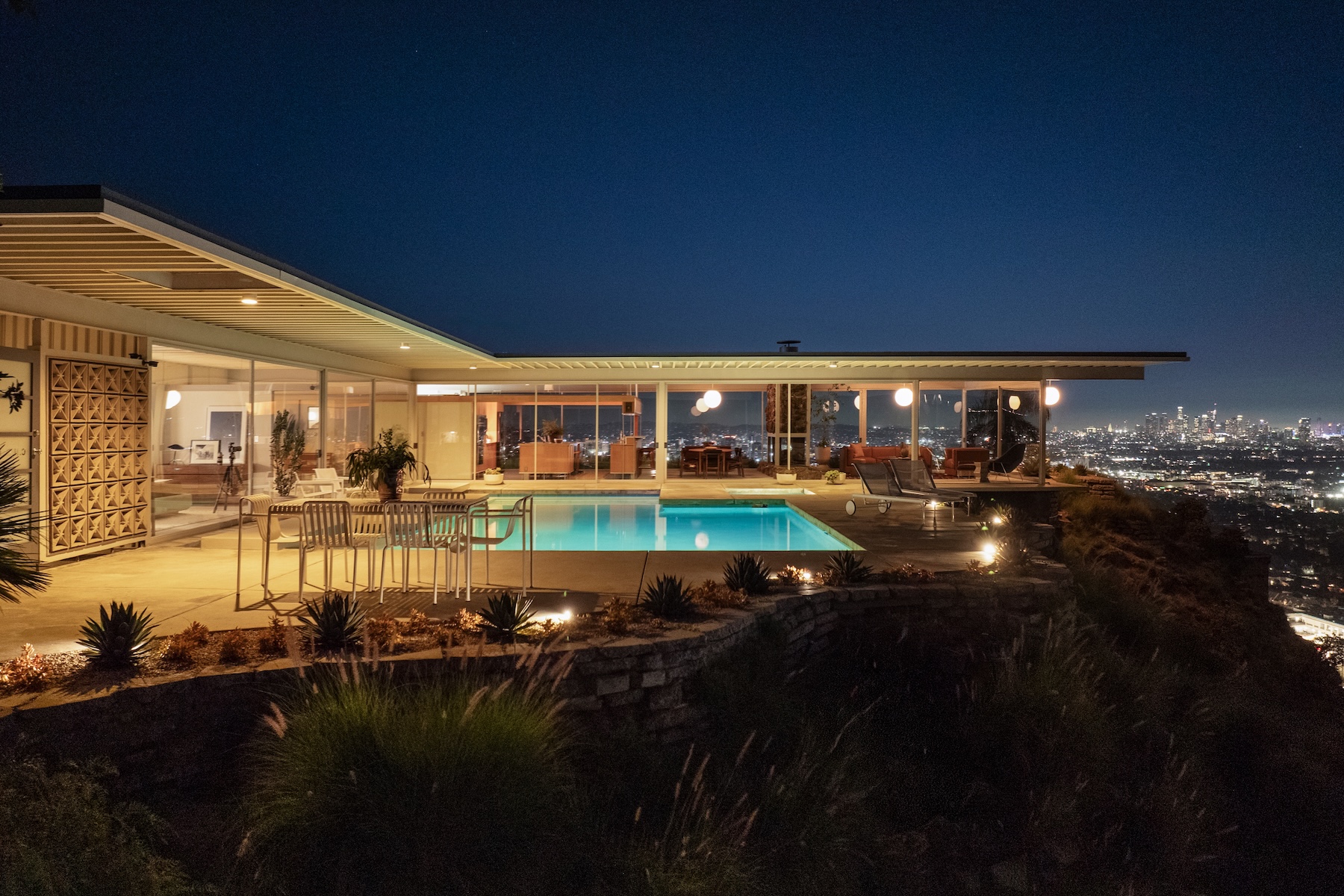 The Stahl House – an icon of mid-century modernism – is for sale in Los Angeles
The Stahl House – an icon of mid-century modernism – is for sale in Los AngelesAfter 65 years in the hands of the same family, the home, also known as Case Study House #22, has been listed for $25 million
-
 Houston's Ismaili Centre is the most dazzling new building in America. Here's a look inside
Houston's Ismaili Centre is the most dazzling new building in America. Here's a look insideLondon-based architect Farshid Moussavi designed a new building open to all – and in the process, has created a gleaming new monument
-
 Frank Lloyd Wright’s Fountainhead will be opened to the public for the first time
Frank Lloyd Wright’s Fountainhead will be opened to the public for the first timeThe home, a defining example of the architect’s vision for American design, has been acquired by the Mississippi Museum of Art, which will open it to the public, giving visitors the chance to experience Frank Lloyd Wright’s genius firsthand
-
 Clad in terracotta, these new Williamsburg homes blend loft living and an organic feel
Clad in terracotta, these new Williamsburg homes blend loft living and an organic feelThe Williamsburg homes inside 103 Grand Street, designed by Brooklyn-based architects Of Possible, bring together elegant interiors and dramatic outdoor space in a slick, stacked volume